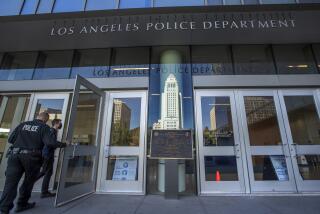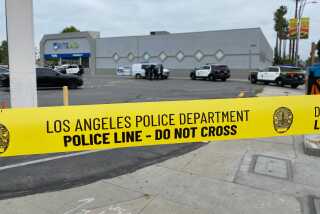When Should a Cop Shoot?
Sheriff Sherman Block reacted to a deputy’s shooting and killing of a black Muslin in Los Angeles last month with the simplest of common sense. From now on officers will “avoid taking some enforcement action in minor incidents.”
That was a good starting point. But with the recent controversial shooting of an unarmed, nearly blind man by another sheriff’s deputy, it may be time for Block and other local law enforcement officials to make sure they are doing all that they can to make sure officers as using their guns as carefully as they possibly can.
Existing police guidelines stress that firearms be used only when absolutely necessary. They are reasonable, and in the case of the Los Angeles Police Department, laudably specific in emphasizing the training and reasoning behind its firearm policy. But no matter how well-wrought the guidelines may be, they can’t possibly cover every situation an officer faces, from emotional family arguments to drive-by shootings. What law enforcement leaders can and must do is encourage what former cop James J. Fyfe calls a “corporate culture” that makes the use of deadly force at best a necessary evil in the career of an officer.
Fyfe, now a professor of justice at American University in Washington, says that unnecessary police violence rarely occurs because a cop is brutal. Most often it’s because the officer is ill-trained in how to respond in a specific situation. Big city departments around the country offer similar training for their officers. Yet Fyfe’s research reports that the rate of fatal shootings by police from 1975-83 showed a major difference between New York and Los Angeles police officers. The LAPD (the sheriff’s department was not studied) was twice more likely to use deadly force than was the NYPD, even taking into account the larger number of NYPD officers. Fyfe admits that one variable that could cause such a noteworthy difference is the crime environment in a city, and that lies beyond the direct control of police administrators.
But one controllable factor is organizational. When top police management embarks on a crusade to make the use of firearms a last resort, officers in the field soon get the message. Insistence on restraint can help avoid bloodshed in tense situations. Sure, law-enforcement officers have tough, rewarding and sometimes scary jobs. The sheriff and the police chief often remind a demanding public of the many hazards facing a police officer. But it is equally important for law- enforcement leaders, in word and deed, to remind officers of their singularly most crucial responsibility: restrained response.
More to Read
Sign up for Essential California
The most important California stories and recommendations in your inbox every morning.
You may occasionally receive promotional content from the Los Angeles Times.









